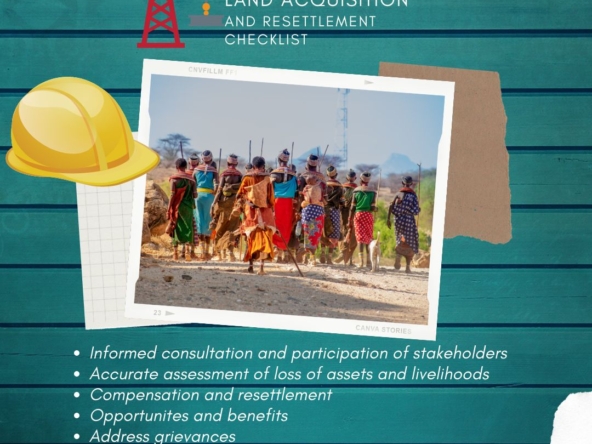You may have watched or read the news from time to time where a project stalls as the local inhabitants of the project area protest against the land being taken by the project while they are yet to receive compensation.
Community protests have often led to project delays, protracted court cases and in unfortunate cases, project failure, leading to huge losses for the investors. This article captures a checklist of what to do to prevent such occurrences.
Informed consultation and participation of stakeholders
To prime for project success, the investor needs to provide relevant information, seek stakeholders’ input and respond to issues raised throughout the project. If your project is going to affect a community’s way of life, then it is only fair that those affected have access to information from the start. They need to know exactly how they will be affected and what losses they may experience.
Women, youth and other vulnerable members of the community need a platform where they can provide their viewpoints. These vulnerable community members need to be identified prior so that the necessary safeguards can be developed.
For example, you may be thinking of building stalls at the market for the women to sell their produce. Yet, the women’s priority could be a bridge over the river to shorten the distance to the market.
Accurate assessment of the assets and opportunities
This assessment defines what the affected people will be required to forgo, as well as ensuring that they agree with it. It might not be just loss of land and houses but also the disruption of their social fabric as well as the loss of cultural heritage such as family grave-sites and shrines.
Compensation
Measures to ensure that any loss (es) of opportunities and livelihoods is/are compensated in means and ways that are acceptable to the people as they are in a better position to inform their preferred compensation. Apart from the actual compensation that the displaced community will receive, they may also need assistance to resettle into their new environment. In essence, the resettled community should be able to restore similar living conditions as they had before displacement, if not better. That said, they may need transport services and social services down to the basic food and water. Some among them may need some form of shelter in the earlier stages as they reconstruct their former houses. Having this well laid out in the Resettlement Action Plan will make the process easier
Opportunities
Make it known if opportunities are available within the project to benefit the affected people. These could be employment, business opportunities and capacity building.
Address Grievances
Finally, it goes without saying that grievances will arise in many projects. It is imperative to establish a mechanism to receive, process and resolve grievances within the project’s timeline-right from design to completion, hand-over and post implementation evaluation.
With experience in major land acquisition projects in Kenya, we are the trusted hand to guide you step by step through the minefield such as is described above. Reach us at services@propertyaccess.co.ke



